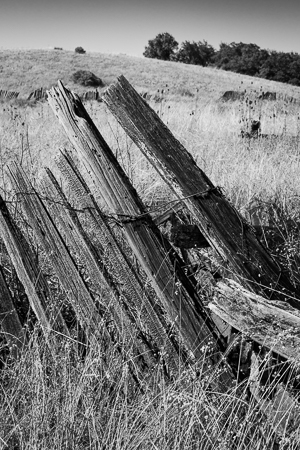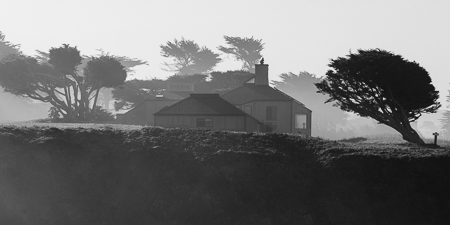Part I: The Craft of Photography & Early- to Mid-20th Century Greats

In retirement, my avocation is landscape photography, particularly of the unmatched North Coast of California. As I’ve sought to transform myself from a high-tech R&D leader to a photographer, I have accumulated about 250 volumes of monographs, collected works, histories, biographies and instructional works.
In these days of the pandemic, I’ve had the time to sort through and re-organize my collection. In this two-part blog post, I will present a summary of the volumes that have most influenced my understanding of photography, my approach to photography and my photography itself since I began this journey.
An earlier version of this post appeared on the DearSusan website as post #1014 in June 2020. I highly recommend a regular reading of the posts on DearSusan. They are uniformly thoughtful and the photography of interest to those wishing to grow their own skills.
Growing My Craft of Photography
Beyond the Snapshot
As I sought to move beyond the well exposed, in-focus snapshot, I found the writing of George Barr to be helpful. When he wrote, he was a practicing medical doctor in Calgary, AB, and an accomplished amateur photographer. Barr published three books with Rocky Nook circa 2010. The two I found most helpful are:
- George Barr, Take Your Photography to the Next Level, Rocky Nook, 2008
- George Barr, Why Photographs Work, Rocky Nook, 2011
Composition and Waiting for the Light
Charlie Waite is considered the doyen of modern British landscape photography, a vocation he has pursued professionally for over forty years. Too, Charlie is the consummate teacher who seems never to pass up the opportunity to help the rest of us grow our skills and aesthetics.
I view Charlie more generally as a thoughtful travel photographer who does emphasize landscapes equally with evocative images of the world. No matter the label, his images are exquisitely composed and captured when the light is right. A careful study of his images will improve anyone’s photography. Two recent volumes I recommend are:
- Charlie Waite, Behind the Photograph: Charlie Waite’s Favourite Photographs and the Story of How They Were Made, Flung Publishing, UK, 2020.
- Bosham Gallery, Charlie Waite Hidden Works, Catalog from Charlie’s 2020 exhibition at Bosham Gallery, Bosham, West Sussex, UK.
See my review of Behind the Photograph here.
A More Expressive Approach
The British landscape photographer David Ward opened my eyes to a more thoughtful and expressive approach to photography in the landscape. His writing introduced me to the notion of the “intimate landscape.”
- David Ward, Landscape Beyond, Argentum, 2008
Photographers Influencing My Understanding of Photography
Early- & Mid-20th Century Greats
Ansel Adams

I have never forgotten my reaction on first seeing original Ansel Adams prints at the Friends of Photography gallery in San Francisco in the early 1990s. I had never seen such brilliant prints and never prints with both the deepest blacks and whitest whites. The world of photography books overflows with Ansel’s work. If one were to select two volumes to study and own, I would recommend:
- Ansel Adams, The Portfolios of Ansel Adams, NY Graphic Society, 1977
- James Alinder & John Szarkowski, Ansel Adams: Classic Images, NY Graphic Society, 1985
To understand how Ansel grew into the photographer he ultimately became, a recent, thoroughly researched volume provides newly available insight:
- Rebecca A. Senf, Making a Photographer: The Early Work of Ansel Adams, Yale University Press, 2020.
Dorothea Lange
I am far too much an introvert to photograph people, at least not strangers. Dorothea is best known for the work she did for the Farm Security Administration (and its successors) during the Depression and War years. Another FSA photographer, Walker Evans, received more contemporaneous recognition for his FSA-work than did Dorothea. In my opinion, Evans’ images show us what the United States looked like during the Great Depression. Lange showed us what the Depression felt like. It is an enormous skill to impart the level of feeling that Lange’s work conveys. Oh, that I could aspire to even a fraction of her skill. I’ve learned a lot from:
- Linda Gordon, Dorothea Lange: A Life Beyond Limits, Norton, 2009
- Olivia Maria Rubio, curator, Dorothea Lange: The Crucial Years 1930 – 1946, LaFabrica, Madrid, in conjunction with PhotoEspaña2009.
Edward Weston
I admire Weston’s life-long devotion to the art of photography. Weston was a pioneer. A half-generation, or more, older than the other “Group f.64” photographers, Weston had a leading role in developing straight photography. Edward worked with the most basic of tools: a single 8×10 view camera with a three-way convertible lens. (His portrait work was done with a hand-held Graflex 4×5 camera.) In the darkroom, he used an ordinary incandescent light bulb to expose his contact prints. Yet, so many of his images are imprinted on the history of photography. I am unaware of any monographs published in his lifetime. A good survey monograph of his work is:
- Beaumont Newhall, Supreme Instants: The Photography of Edward Weston, NY Graphic Society, 1986.
To understand how he devoted his life to his art, consider:
- Nancy Newhall, editor, The Day Books of Edward Weston, Volume I: Mexico, Aperture, 1973.
- Nancy Newhall, editor, The Day Books of Edward Weston, Volume II: California, Aperture, 1973.
- Charis Wilson & Wendy Madar, Through Another Lens: My Years with Edward Weston, North Point Press, 1998. (Wilson was his partner and wife from the mid-1930s through much of World War II.)
While a pioneer, Edward learned much working alongside Tina Modotti. Study the images and watch the dates carefully to see who influenced who in:
- Sarah Lowe, Tina Modotti & Edward Weston: The Mexico Years, Merrell, 2004.
Brett Weston
Edward’s second son followed his father’s footsteps. Brett’s work stands on the shoulders of the pioneering work of Edward and gains from improved gear and materials available in his lifetime. I think Brett’s images are in many ways stronger. His career retrospective monograph is page after page of wonderful images.
- Brett Weston, Master Photographer, Photography West Graphics, 1989
Coming next: Part II will discuss books from contemporary photographers.
Frank Field, The Sea Ranch, California, Revised November 2020
